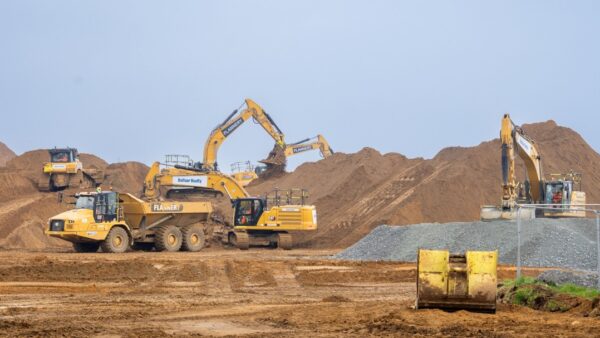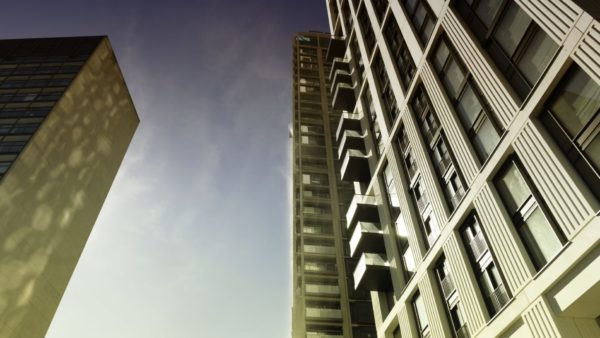
Improved health and safety is a great argument for BIM adoption, and Australian professor Kerry London is set on proving that. She tells Rod Sweet about her research.
If BIM was proven to deliver improved health and safety, would that help convince construction business leaders encourage of its benefits? Professor Kerry London FCIOB believes so. Pro vice chancellor of research at Torrens University Australia, she has for years researched the adoption of new technologies in construction, including robotics and offsite manufacturing.
For the last three years, she has focused on how BIM can make projects safer for workers. Her reasoning is straightforward: if a digital model of a project can be minutely interrogated to optimise construction planning, construction methodologies, logistics and clash detection, it’s a small step to interrogate that model for safety risks such as working at height and plant collisions.
In August 2019, the government of New South Wales (NSW), through its Centre for Work Health and Safety, commissioned London to lead a team of researchers from Torrens and Western Sydney University to investigate how BIM could be used to improve safety outcomes. The work involved scouring the world for examples of best practice and developing tools and guidelines for clients to use. The research project was completed in October this year.
Integrated safety management
In the first phase, researchers sought examples of safety management being integrated in BIM-enabled projects around the world, interviewing experts in Australia, Singapore and the UK.
“Some projects were pilots, while others were little gems of interesting practice where people were using a model to query and interrogate construction methodology so they could go to the client leadership team and say, did you know that if we did this, it would make the work safer?” she explains.

Kerry London FCIOB CV
(selected roles)
2020-present: Pro vice chancellor research, Torrens University
2017-20: Dean, School of Built Environment, and other roles, Western Sydney University
2016-17: Dean, research and innovation, University of South Australia
2011-16: Professor, construction project management, RMIT University
2013-present: Board member, Australian Sustainable Built Environment Council
2011-13: President, Australasian Chartered Institute of Building
“The model was used to visualise the construction sequencing of different construction methodologies. This was especially useful to show the client what a safer approach looked like on site compared to the approach that was maybe less safe.”
In Australia, the researchers interviewed 25 senior industry figures, and examined three major BIM-enabled projects. That led to the development of a suite of guidance notes, decision-making tools and cases studies for clients, which are to be launched by the NSW government in the coming months.
“What we found was that client leadership is a really important part of BIM adoption and bringing BIM and safety management together,” said London. “Procurement and tendering are important because sometimes we put things out to tender and we ask for a BIM model but we may not quite know what we’re getting at the end of the day.
“So we thought, how can we give clients tools and understanding so they can lead more effectively in a collaborative way?
“Integrating BIM and work health and safety management can happen when the client has created an environment for good data management. Some clients are already focused on that, such as Transport for NSW. They’re very keen on digital engineering. So they create the environment and the construction supply chain has to respond.”
Subcontractors using BIM
Some specialist subcontractors are already using BIM imaginatively. A global crane company active in NSW – Marr Contracting – uses BIM extensively to model crane erection and dismantling, organise communication with the client and engineers, and interrogate and visualise construction methodologies to optimise movements for safety.
Another example is F&D Normoyle Engineering, which prefabricates timber screens for facades. It was working on a complex project to construct a nine-storey circular building, the Darling Exchange at Sydney’s Darling Harbour. F&D modelled the logistics planning in BIM and each week it would use the BIM model to communicate to other trades what elements were arriving on site, when and how they would
be installed.
“Examples like these informed the principles and tools we produced, and they make a great argument for early contractor involvement in achieving a good outcome,” London says.
“Integrating BIM and safety can happen when the client has created an environment for good data management.”
Separate to the research, the NSW government released its Infrastructure Data Management Framework (IDMF) in December last year.
“I was scared to open that document,” London says, “because I worried it might say everything we’ve done is completely off track, but it was very gratifying to see that everything we’re doing is aligned with their framework.”
There has been disagreement over how much weight clients should give BIM during procurement, London says, but she feels clients need to know what use they will make of a BIM model and how it will work with their company’s ethos for work health and safety.
“In Australia multiple parties, such as employers, contractors, designers and clients, can be liable for work health and safety and site accidents, so interest should be keen,” she said. “People tend to approach BIM generically, from a technology point of view and with a focus on improving productivity in general.
“But with health and safety being such an important topic here, as it is in the UK, it made sense to talk about how one can help the other, and see if that helps BIM adoption in a different way.”
Drafting the new standard
London says the approach is gaining traction. She is joining the committee responsible for drafting the ISO 19650 standard to focus on BIM and safety management.
“Not everybody gets excited about that kind of thing,” she says, “but I think it’s a really good outcome for the project. International standards have such reach and longevity that the research outcomes from this study will certainly have significant impact.”











